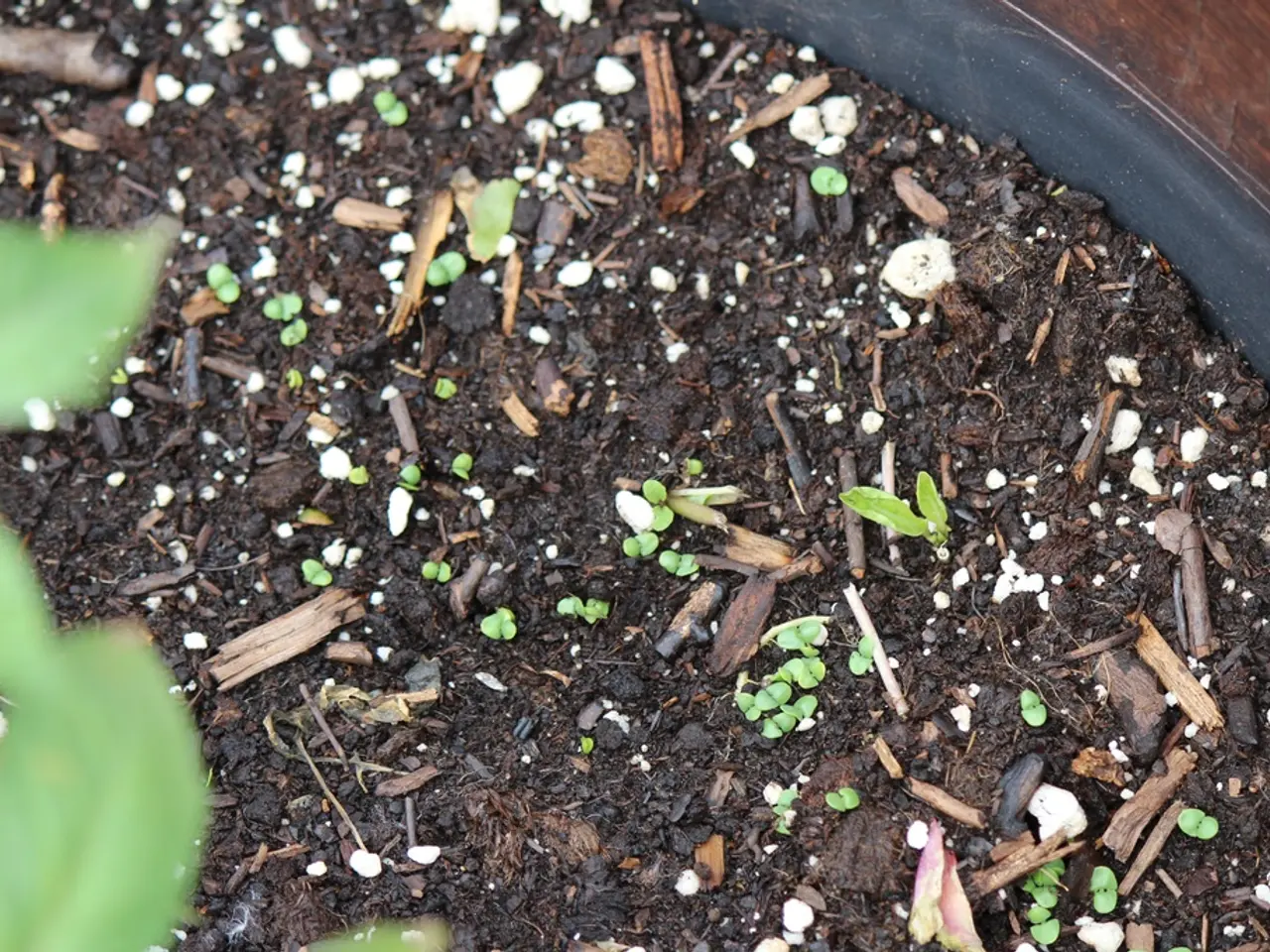Soil Acidity: A Double-Edged Sword for Plant Growth?
In the world of agriculture, soil acidity is a crucial factor that significantly influences plant growth and agricultural productivity. Soil acidity, characterized by a low pH level, can directly affect nutrient availability and microbial activity essential for plant growth.
Most plants prefer slightly acidic soil, with an optimal pH level ranging between 6.0 to 7.0. For instance, vegetables typically thrive in this pH range, which maximizes nutrient availability and uptake. On the other hand, acid-loving plants like blueberries and azaleas prefer highly acidic soils with a pH of around 4.1 to 5.0 [1][5].
Soil acidity can lead to deficiencies in essential nutrients like calcium, magnesium, and molybdenum. Moreover, it can increase the solubility of toxic metals such as aluminum, which can harm plants [1][2]. Conversely, alkaline soils may limit the availability of iron, copper, zinc, and boron [1].
The key reasons why soil pH impacts plant growth and agricultural productivity include nutrient availability, microbial activity, and plant health.
- Nutrient Availability: Certain nutrients become chemically unavailable or toxic depending on the pH. For example, phosphorus, potassium, and magnesium are more available in slightly acidic to neutral soils, while highly acidic or alkaline pH levels can cause nutrient lockouts, reducing yields [1][2][3].
- Microbial Activity: Beneficial soil microbes, including nitrogen-fixing bacteria, thrive best in a pH range of 6.0 to 6.8. Microbe activity influences organic matter breakdown and nutrient cycling, critical to soil fertility and plant health [1].
- Plant Health: Soil pH influences plant species suitability; acid-loving plants require more acidic soils, while many crops do best in near-neutral pH. Soils outside the optimal pH range can stress plants, reduce growth, and increase disease susceptibility [1][4].
In tropical or high rainfall areas, soils tend toward acidity due to leaching of minerals, requiring pH management through amendments to optimize crop performance [4]. Fertilizer use, especially nitrogen-based fertilizers, can also contribute to soil acidity through the nitrification of ammonium [New Fact].
Managing soil pH to fall within the optimal range for specific crops is a crucial strategy for improving nutrient uptake, maximizing crop yields, and sustaining agricultural productivity overall [2][5]. By understanding the role of soil acidity and its impact on plant growth, farmers can make informed decisions to maintain healthy soils and ensure bountiful harvests.
References: [1] Smith, J. L., & Paul, E. A. (1990). Soil Fertility and Crop Nutrition. Prentice Hall. [2] Rengasamy, P. S. (2006). Soil acidity and aluminium toxicity: Recent advances and future prospects. Plant and Soil, 284(1-2), 1-16. [3] Mengel, P., Kirschbaum, M. U., & Schmid, M. (2001). Nutrient uptake and use efficiency in crops. Springer. [4] Tisdall, D. C., & Oades, J. M. (1982). Soil fertility and plant nutrition: an introduction. Longman Scientific & Technical. [5] Schnitzer, M., & Skinner, G. K. (1985). Soil acidity and its impact on plant growth and productivity. Journal of Plant Nutrition, 9(6), 1291-1316.
- Adequate soil pH is crucial in the health-and-wellness aspect of plants, as it influences nutrient availability and uptake, particularly for nutrients like phosphorus, potassium, and magnesium, which are more accessible in slightly acidic to neutral soils.
- Ensuring fitness-and-exercise of crops and promoting their growth can be achieved through optimal soil pH management, as alkaline soils may limit the availability of essential nutrients like iron, copper, zinc, and boron, whilst highly acidic soils can increase the solubility of toxic metals like aluminum.




